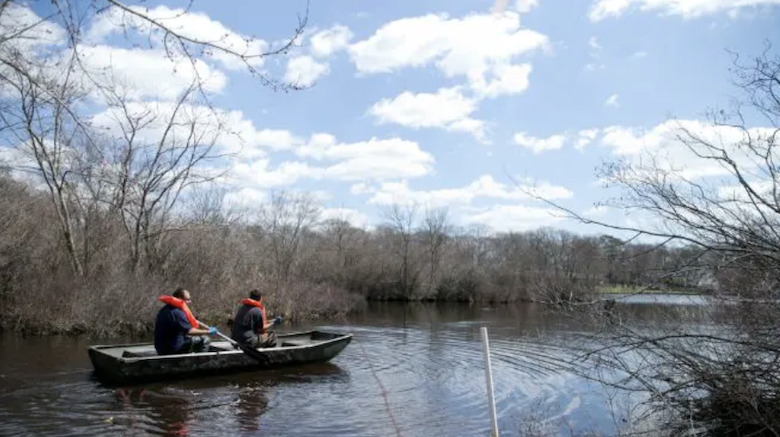With the world’s population expected to rise by two billion people by 2050, scientists are scrambling to discover ways to feed everyone.
Duckweed may be one of the answers.
The aquatic plant found floating on the surface of lakes and ponds was the topic Nov. 15 of St. Joseph’s annual biology seminar held to honor former SJNY biology professor Dr. Mohammad Rana, a botanist by trade who lectures around the world, inspiring others to help their communities.
“One societal challenge that we’re facing is being able to feed a growing population,” said the event’s presenter, Kenneth Acosta, a Ph.D. candidate and duckweed biology expert from Rutgers University’s plant biology department. “We need to double food production, but in a sustainable manner that minimizes environmental impact.”
Acosta noted research that shows that when duckweed — which contains more protein than soybeans — is supplemented into animal feed at low concentrations, the animal shows similar or increased growth compared to the conventional animal feed.
This benefits humanity because it alleviates the demand for corn and soy, he said.
“If you can reduce the demand for corn and soybean for animal feed, you can free up some of that food for human consumption,” Acosta told the dozens of viewers who virtually attended the Zoom seminar, hosted by the University’s Sustainability Committee and Department of Biology.
Duckweed already is consumed by people, particularly in parts of southeast Asia, and it now can be commercially sold in the United States as a source of protein.
“If you look across the different essential amino acids, duckweed is able to provide sufficient quantity of all these essential acids,” Acosta said. “It is a good and complete source of protein for humans. We will see this added to food in the near future.”
Duckweed is a very tiny and simple plant – it takes about 15 of the largest or 400 of the smallest plants to cover the space of a quarter coin. It grows very fast and floats on the surface of freshwater bodies across the world.
“Duckweed produces through asexual reproduction at a rate that is 10 times faster than soybean and rice, and about six times faster than corn,” Acosta said.
Moreover, duckweed can positively impact other areas of society.
Acosta explained that the plant is helpful for remediation — cleaning wastewater and removing pollutants that can be difficult and costly to remove using traditional treatment. It also can be useful in the production of biofuels that typically are made from corn.
“One benefit of duckweed compared to corn is that no land is needed,” Acosta said. “You can grow it on wastewater and it won’t compete for land used to grow food.”
About the Sustainability Committee
“The sustainability committee holds academic events on campus, organizes and participates in clean-ups and is one of the largest volunteer committees at the University, with over 60 members across the Long Island and Brooklyn campuses,” said Konstantine Rountos, Ph.D, head of the Sustainability Committee and associate professor of biology.
The event’s host Igor Ivanovski, Ph.D., assistant professor of biology at St. Joseph’s and a member of the Sustainability Committee, added, “The committee spreads awareness about sustainable practices and sciences so people can implement these concepts and help make their community be more environmentally conscious.”

